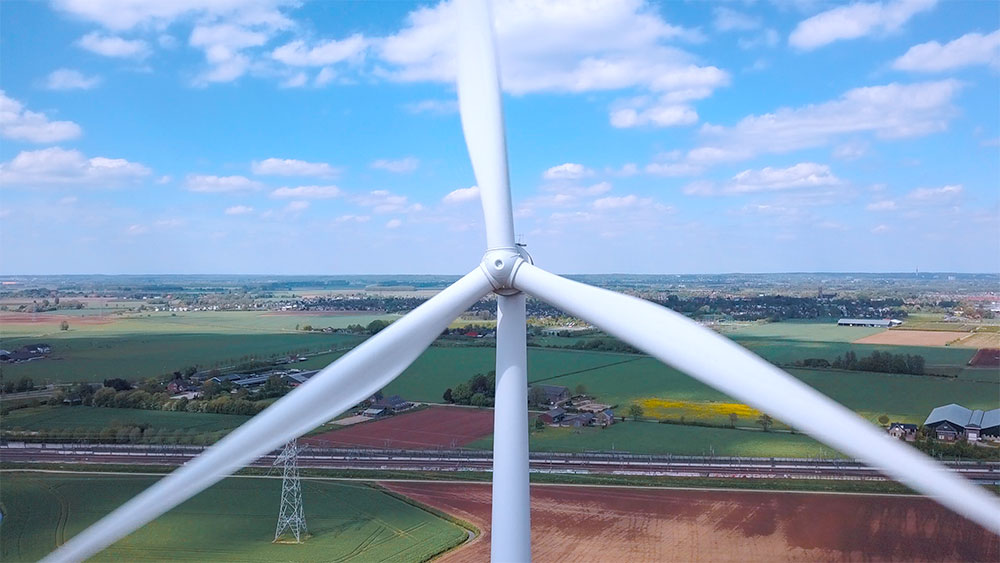The production of energy from renewables reached 40% of the total and contributed to reducing power generation emissions by almost a quarter.
The installed capacity in wind power and photovoltaics grew by 20% in 2019.
The new report on the Spanish power sector created by the Naturgy Foundation also includes the increase of production with combined cycles in the last year, which acted as a back-up energy to renewables, as well as the increase in the tariff deficit.

As outlined in the publication “The Spanish power sector in numbers. 2019 Report”, created by the Naturgy Foundation and presented by the economist specialising in energy markets, Miguel Angel Lasheras, “the installed renewables capacity in the Spanish peninsula system, without taking into account water, grew by 20% last year, which means we are closer to the annual record of renewables capacity, reaching 40%.”
With regards to production, if water is considered, renewables generated 40% of the total, broken down as follows: 55% wind, 20% water and 9% photovoltaic.
The Spanish power generation system reduced its CO2 emissions by 23% last year. “Emissions fell to 50,000 ktn of CO2, and this while the price of CO2 was rising, approaching €25/Tn,” said Lasheras
This trend is in line with the emissions reduction since 2005, when the emissions rights market was introduced. Since then, power generation emissions have reduced by almost 50% in Spain.
According to Lasheras, “we are at the start of a profound new investor cycle. In Spain, the relevance of this investor effort is clear if we consider that it reinforces what has happened in the last 20 years, in which aid for renewables from the electricity tariff has been €69 billion."
Meanwhile, Lasheras recalled that, “in 2019, the investor effort in renewables which started to intensify in 2018 led to wind and photovoltaic facilities without any specific remuneration, with 6.4 GW of new installed capacity, even though it was still below the 8GW expected.”
The combined cycles cover the coal gap
Another of the dynamics from the previous year was the increase of electricity production with combined cycles, reaching 21% of total production. The increase of generation with natural gas occurred in parallel to a reduction of generation with coal, which accounted for only 4% of total production in the previous year.
With regards to the use coefficient, the combined cycles went from 12.3% in 2018 to 23.8% in 2019, while coal went from 41.6% to 13.2%.
According to Lasheras, “it must be noted that one of the events which contributed most to the reduction of emissions from power generation, in addition to renewables, was the increased use of the combined cycles to produce electricity. In 2019, they increased its generation in the peninsula by 93.7% on the previous year, that is, they almost doubled its production in one year, and more than replaced all the electricity that the coal power plants stopped producing.”
For the energy expert, this scenario “marks the end of coal as an energy source in Spain and its gap will be filled by natural gas, with a CO2 balance much more favourable for progress in decarbonisation as it reduces emissions from coal combustion by two thirds and strengthens the system’s reliability, providing backup to the intermittency of renewables.”
The costs of the system
The report also includes economic data relating to electricity activity, which shows a drop in costs compared to the previous year. Energy was reduced by 17%, in line with the wholesale markets, and the average unit cost decreased, reaching its lowest point in the last five years.
Cost behaviour was in line with the energy prices for the consumer. In the housing sector, both with and without taxes, the Eurostat statistics for a typical consumer indicate lower prices than in 2018 and slightly above the European average. And in the industrial segment, prices were slightly below the European average, also with a drop on those from the previous year.
Meanwhile, domestic electricity demand reduced by 1.5% “in contrast to the REE and CNMC forecasts, which recorded reductions of 0.3% and 0.4%, respectively.”
By analysing all this data, the economist concluded that “2019 was a year in which the power sector came closer to the ecological transition promoted by European and Spanish institutions: less emissions, more renewables and lower costs.” He added: “The only negative aspect was the deficit of over €700 million, which we trust is circumstantial, and which was due to excessive optimism in the forecasts on which the tariff calculation was based and set.” The tariff deficit shows an outstanding debt of over €16 billion including interest at the close of 2019.
“We must have confidence that the shift imposed by Covid-19 does not affect these trends seen in 2019, and that we come out the other end of the crisis with renewed vigour to achieve an efficient and decarbonised production system in the coming years,” concluded Lasheras.
Share